
In today's summary:
- Drones once again reached Moscow on Monday, July 24: likely targets could include the Kremlin, the Russian Defense Ministry, and the APT28 (FancyBear) hacker group;
- The third major ammunition depot in the Crimean peninsula was attacked over the course of a week;
- According to Kremlin spokesman Dmitry Peskov, the Transfiguration Cathedral in the center of Odesa was destroyed not by Russia, but by “anti-missiles”;
- Russian troops have managed to make significant advances in the Lyman direction;
- Military expert Jack Watling says the West needs to change its approach to the training of Ukrainian army servicemen;
- Three members of Russian government media came under fire in the Zaporizhzhia region: one killed, three wounded;
- Non-combat losses reported among the Russian Armed Forces, some related to alcohol consumption in the combat zone;
- Russia's equipment and weapons losses exceed those of Ukraine, despite being the defending side (during Ukraine’s counteroffensive) with expected lower casualties.
Shelling and sabotage
On the morning of July 24, Moscow was attacked by several drones. According to the Russian Defense Ministry, two unmanned aerial vehicles (UAVs) took part in the attack. One of them crashed near the ministry’s headquarters. According to the Russian Telegram channel VChK-OGPU, the targets were the Kremlin, the Defense Ministry and the communications hub of the Russian Navy's main command center.
The drones were spotted the day before, law enforcement agencies received several reports of UAVs in the sky above the town of Serpukhov — eyewitnesses reported gray aircraft-type drones flying toward Moscow. Closer to Sunday evening, reports of a drone near Moscow’s Volgogradsky Avenue and a drone near Sergiev Posad began to appear.
As early as midnight on July 24, an aircraft-type object with a 5-meter wingspan, flying at a height of 20 meters, was spotted near the village of Markovo in the Ramensky District.
In the morning, one drone landed on a non-residential two-story building housing the Defense Ministry's Central Military Band on Komsomolsky Prospekt (Avenue). The windows in the building were blown out. As previously reported by The Insider, the building may be home to the APT28 (Fancy Bear) hacker group, which has been repeatedly linked to GRU, Russia’s military intelligence agency. In February 2022, a group of FancyBear hackers launched a large-scale attack on Ukrainian websites. In addition to DDOS attacks on government resources, they also spread malware through cloned government websites, such as through a fake petition in support of Volodymyr Zelensky, written in broken Ukrainian.
A drone without an explosive device was discovered at the central cemetery in Zelenograd, just outside Moscow. The location of the crash is near military base No. 45603-3, which serves as the Communication Center of Russia's Navy, which is responsible for controlling the country’s naval forces. According to a source quoted by VChK-OGPU, this is not the first such incident.
The Russia-appointed “head” of Crimea Sergey Aksyonov wrote on July 24 that 11 enemy drones were shot down by air defense forces and suppressed by electronic warfare systems in the sky above the peninsula. He also mentioned an ammunition depot hit in the Dzhankoi District and damage to a private house in the Kirovsky District due to UAV debris. As a precautionary measure, traffic on the railroad and Dzhankoi — Simferopol highway was temporarily halted.
According to the Russian Defense Ministry-affiliated Telegram channel Rybar, the drones were launched from Dovhyntseve Airfield near Ukraine's Kryvyi Rih and traveled along the Mykolaiv region to Odesa before turning towards Crimea, covering a distance of more than 500 kilometers. This choice of route suggests the development of new and complex paths to deceive Russian forces.
Shortly after, the Ukrainian Air Force's Su-24 aircraft fired four Storm Shadow cruise missiles, successfully hitting targets. Three missiles struck an ammunition depot near Vilne, and one targeted a repair base near Novostepne. All four missiles hit their targets.
On the morning of July 22, Aksyonov reported “an attempted UAV raid on infrastructure facilities in the Krasnohvardiiske District.” He later clarified that “an ammunition depot had detonated,” leading to the evacuation of the population within a 5 km radius from the incident’s site.
Rybar claimed that the July 22 strike on the village of Oktiabrske (lying 30 km north of Simferopol) was also carried out by two long-range Storm Shadow/SCALP cruise missiles, and it was their first use against targets on the Crimean peninsula. According to Rybar, an oil storage facility and an ammunition depot of the Black Sea Fleet were hit.
The Armed Forces of Ukraine’s (AFU) Strategic Communications Directorate confirmed the destruction of an oil depot and ammunition depot in Oktiabrske. The Ukrainian DeepState open-source intelligence (OSINT) project published satellite images of the aftermath of the strike.
After the attack, 12 residents from the Krasnohvardiiske District received medical aid, and four of them required hospitalization. According to ASTRA, the affected depot stored 3 tons of artillery ammunition.
During the night of July 19, a fire broke out at an ammunition depot in Crimea, located at the firing range in the Kirovsky District, northwest of Feodosia. In response to the incident, authorities temporarily closed the Tavrida highway and relocated over 200 people to temporary accommodation centers. Rybar speculated that the attack might have involved Storm Shadow/SCALP missiles, but unlike previous similar cases, no wreckage from these missiles was presented.
On the night of July 20, a drone crashed in the village of Razdolne in northwestern Crimea, resulting in the death of a 14-year-old girl and damage to four administrative buildings, as reported by Aksyonov.
The heightened activity on the Crimean peninsula suggests possible preparation for a new phase of the AFU's offensive operation. With strikes on the Chonhar and Crimean bridges and the rear ammunition depots being regularly targeted, it seems that these depots lacked proper protection and camouflage, making them vulnerable compared to field depots closer to the front line and potentially larger in size.
According to official data, a total of 43 drones were shot down by air defense or suppressed by electronic warfare in Crimea between July 17 and July 24. As reported by the Telegram channel Krimsky Kanal (“Crimean Channel”), about 10 drones hit their targets. Three people died and 12 people sought medical assistance as a result of the attacks.
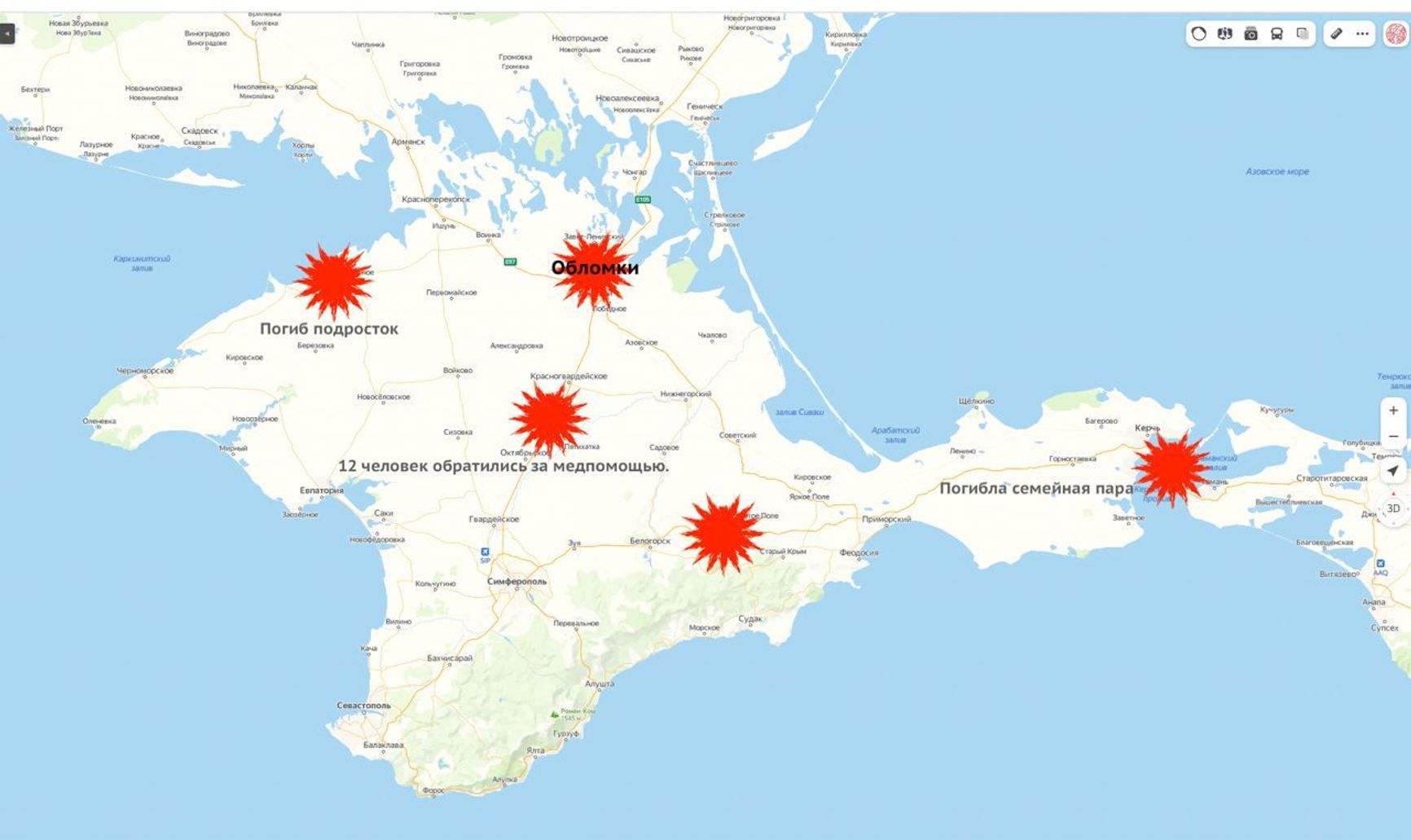
On the night of July 24, Russian troops attacked the Odesa Region with kamikaze drones. According to Ukraine’s Operational Command South and the head of the Odesa Regional Military Administration (OVA), Oleh Kiper, the target of the four-hour attack was the port infrastructure located on the Danube River. Ukrainian air defenses successfully shot down three drones, but the total number of drones launched at the region was not specified.
Strikes in the port of Reni resulted in the destruction of a grain hangar, damage to tanks storing other cargo, and a fire in one of the production facilities, which was extinguished. Six port employees were injured, and four of them were hospitalized with injuries.
Pro-Russian Telegram channels, including Voenny Obozrevatel (“Military Observer”), reported that cargo traffic was redirected to the Reni Commercial Seaport on the Danube after the formal closure of the ports of Odesa and Chornomorsk.
The night of July 23 saw another missile strike on Odesa. Ukraine’s Air Force Command reported that Russian forces fired a total of 19 missiles of various types. Five Onyx cruise missiles were launched from a Bastion coastal missile system in Crimea, three Kh-22 cruise missiles were fired from a Tu-22MZ aircraft, four Kalibr missiles were launched, possibly from a submarine. Additionally, five Iskander-K cruise missiles and two Iskander-M ballistic missiles were fired from Iskander missile systems in Crimea. According to the reports, nine of the missiles were successfully intercepted and shot down.
The strike damaged at least six residential buildings, including apartment blocks. Oleh Kiper reported that one person was killed and 19 others were injured, among them four children. 14 people were hospitalized.
The Transfiguration Cathedral in the center of Odesa was damaged as a result of the attack. Videos and photos of the building show significant damage to the altar area, and the collapsed roof of the cathedral.
Kremlin spokesman Dmitry Peskov claimed that the cathedral was destroyed not by Russia, but by apparent “anti-missiles” in an attempt to shift the blame on the destruction to Ukraine’s air defenses.
“Our armed forces never strike social infrastructure, or even less cathedrals, churches and other such objects. This is an absolute untruth. Anti-missiles were involved here — they were fired and they destroyed this cathedral.”
Photographers Kostiantyn and Vlada Liberov captured images of the aftermath of Russian missile strikes on an agricultural enterprise in the Odesa Region.
Russian troops reportedly shelled Chasiv Yar with cluster munitions. The head of the Donetsk Regional Military Administration, Pavlo Kyrylenko, reported that the Palace of Culture, which was being used as the city's humanitarian headquarters and medical aid site, was hit. The attack caused a fire that destroyed a stock of humanitarian aid (food kits and household chemicals) and medical equipment, but there were no casualties.
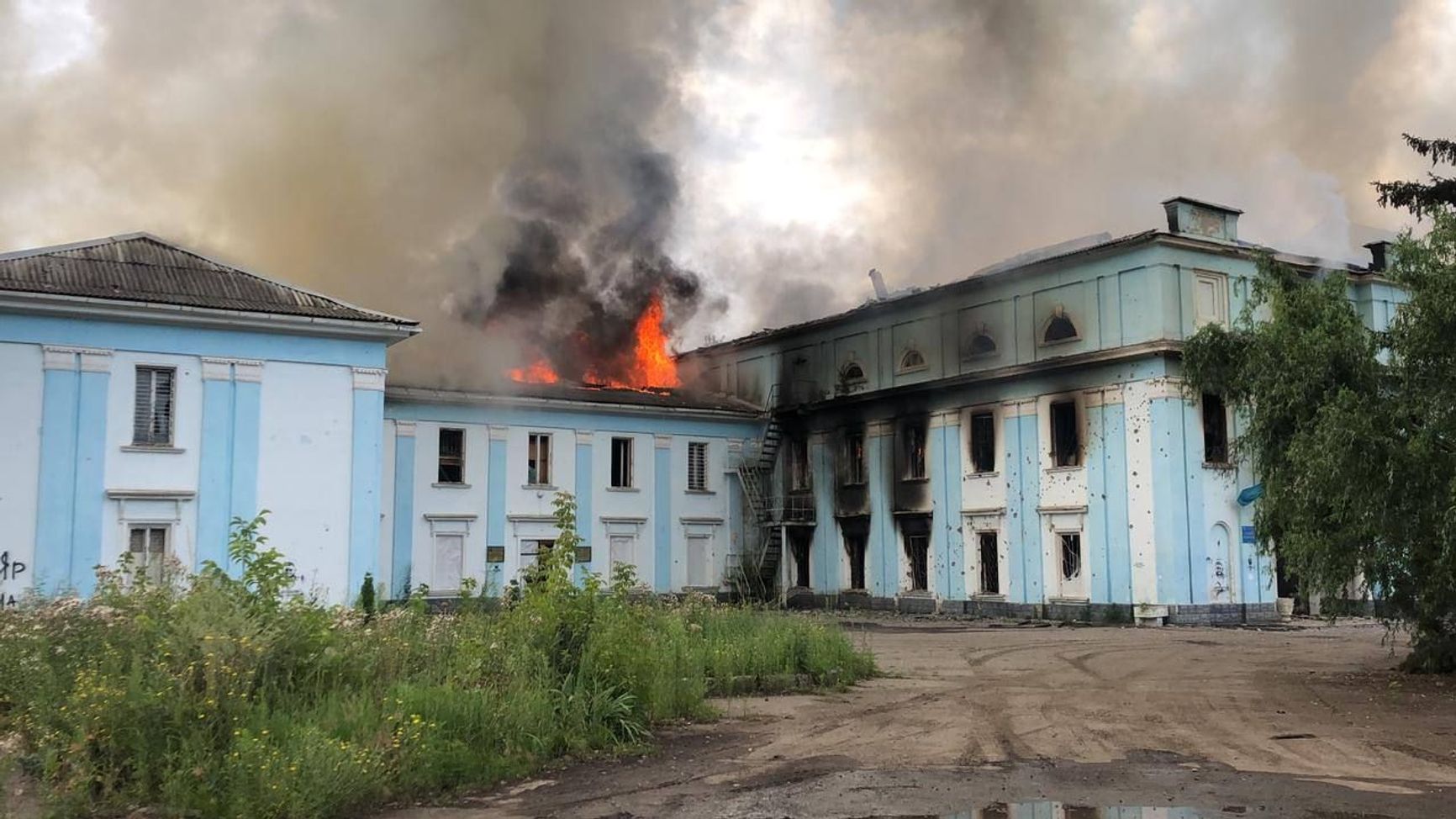
The front line
Ukraine’s Deputy Defense Minister Hanna Maliar reported on the assault actions of the Russian Armed Forces in the Kupiansk and Lyman directions, as well as the AFU’s offensive near Bakhmut and in the Melitopol and Berdyansk directions in the south of Ukraine. According to Maliar, the Russian troops were not successful, while Ukrainian forces managed to liberate additional territories: 4 km² near Bakhmut during the week (35 km² total since the beginning of the offensive) and 12.7 km² in the south (192.1 km² total since the beginning of the offensive).
Ukrainian OSINT project DeepState geolocated the shelling of Ukrainian positions just 1,300 meters from the outskirts of Robotyne.
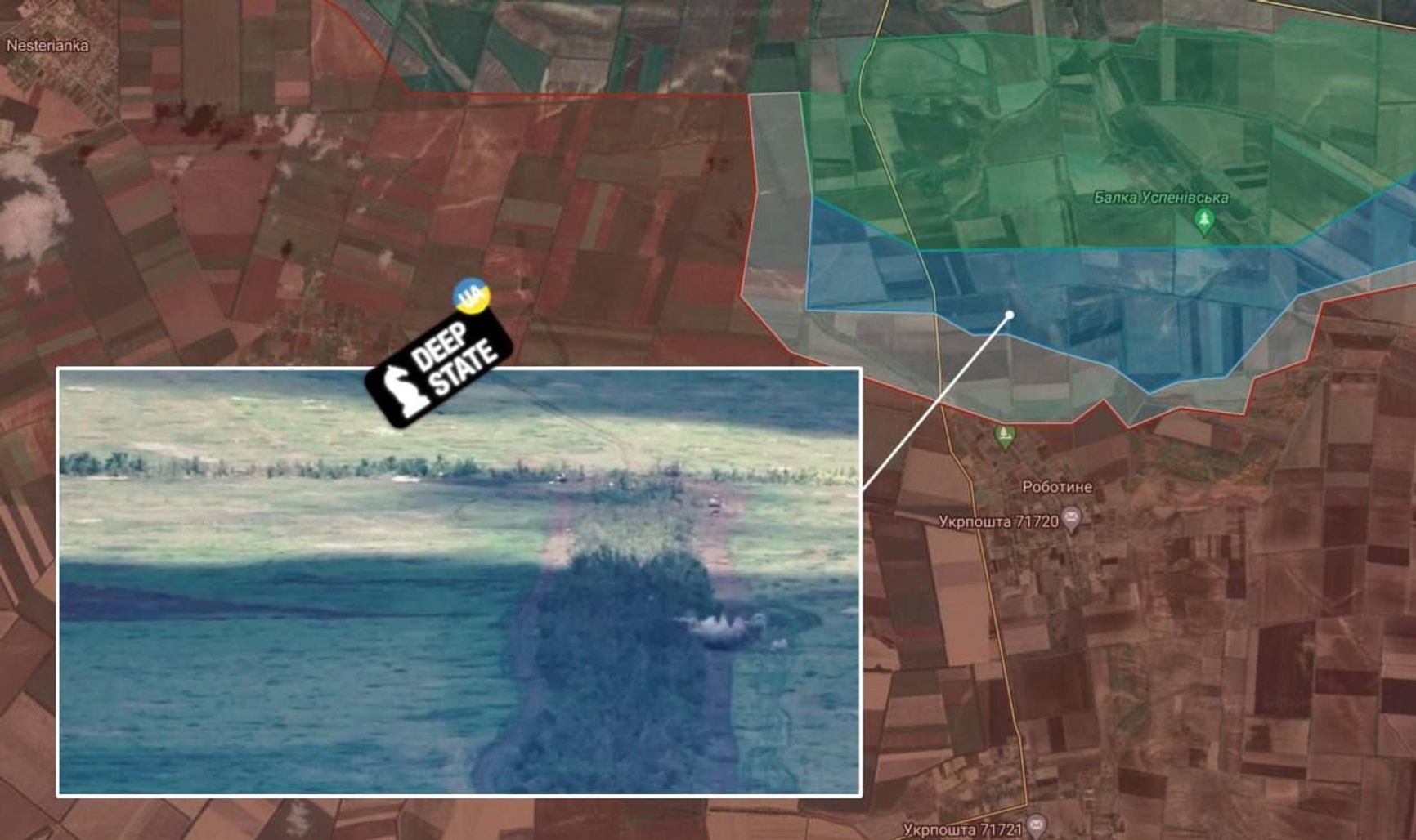
DeepState also geolocated the shelling of a Russian Armed Forces stronghold in Kleshchiivka and the assault on Russian positions near Orikhovo-Vasylivka.
Russian troops notably made a significant advance near Karmazynivka on the Svatove-Kreminna line. The Military Informer (“Voennyi Osvedomitel”) Telegram channel reported that Russian units were able to cross the Zherebets River and occupy a number of heights on the opposite bank, thereby expanding and deepening a 5-by-7-kilometer bridgehead. During the offensive from the direction of Karmazynivka, assault units from three motorized rifle brigades captured several AFU strongholds.
Ukrainian forces are reportedly using cluster munitions in the Avdiivka and Lyman directions, possibly in order to contain Russian offensives. Video recordings have been published as evidence (1, 2).
The intensity of the fighting in the direction of Zherebyanky can be judged from the published photos of the area. The first photo was taken before the beginning of the AFU counteroffensive on June 7, 2023. The rest were taken three weeks later. Oleg Marzoev, a military blogger from North Ossetia (he is also the brother of General Arkady Marzoev, the hero of this story by the BBC Russian Service), wrote that in July, 500 to 1,000 shells per day fell on Russian positions near Zherebyanky.
Western experts and analysts continue to publish reports explaining the slow pace of the Ukrainian counteroffensive. Jack Watling, a senior researcher at the Royal United Services Institute for Defense Studies (RUSI), considers the mistakes made by Ukraine’s Western allies the key factor — namely, the insufficient training of Ukraine's troops to master a host of Western weapons and equipment systems. According to Watling, Western countries initially trained Ukrainian soldiers individually, but later shifted to training whole units at European training grounds after providing tanks and infantry fighting vehicles to Ukraine.
However, full-fledged training is still a challenge due to the use of Ukrainian systems in the war that are not NATO-certified, such as drones and fire control systems, limiting their use on Western ranges. Watling suggests adapting training methods to focus on the strengths of the Ukrainian Armed Forces and allowing instructors to modify training courses accordingly.
In a rare interview for a Russian officer of his level, Lieutenant General Andrei Mordvichev, commander of Russia’s “Center” group of troops, assessed the duration of the Ukrainian counteroffensive, suggesting that it could last until next spring.
Losses
The Russian Defense Ministry reported an artillery strike on propagandists from the Izvestia publication and state-run RIA Novosti news agency, who were covering the AFU's artillery shelling of the Zaporizhzhia Region with cluster munitions.
Four people were wounded, and RIA Novosti's military correspondent, Rostislav Zhuravlev, later died from injuries caused by a cluster submunition burst.
According to some reports, the incident occurred in the village of Hrozove in the Zaporizhzhia Region.
As previously reported by The Insider, Zhuravlev fought in the so-called “LPR” in 2014, also took part in the capture of the Donetsk Regional State Administration. Meduza journalist Alexei Kovalyov, who previously (until 2013) worked at RIA Novosti, turned to his former colleagues with a rhetorical question:
“Tell me, friends, when you sent your employee to an active combat zone looking like that, how do you think the enemy should have guessed that they were looking at a non-combatant? By a tiny patch with the agency's logo on it? Is this what they teach at the Defense Ministry's Bastion course for journalists in extreme situations?”

On the same day, Deutsche Welle cameraman Yevhen Shilko was wounded in a Russian shelling of Druzhkivka.
On July 22, the «Union of Donbass Volunteers» reported that Alexander Boroday, a State Duma deputy and former chairman of the Council of Ministers of the so-called «DPR,» came under fire south of Bakhmut. Two officers of the brigade headquarters who were in the back seat of the car were wounded, while the driver and Boroday sustained non-serious injuries.
In Bryansk, Russian forces suffered more non-combat losses. Three contractor [soldiers who voluntarily signed a contract with the MoD, as opposed to mobilized soldiers or conscripts — The Insider] sappers accidentally blew themselves up while planting a mine on the border. Two died instantly, and one was hospitalized. The incident occurred near the village of Znob.
Just a few days before, in the same region, three military personnel also accidentally blew themselves up on a TM-62 anti-tank mine. Back in May, Bryansk Region was the scene of another tragicomic incident.
On May 17, in the village of Kister in the Bryansk Region, a tragic accident occurred involving Senior Lieutenant Danila Tyutyunov, a contract soldier from military unit 11388. He crashed into a tree on a quad bike and died instantly, while his passenger, Lieutenant Dmitry P., was injured. Two of their colleagues — Vladislav G. from military base 92088 and medical instructor Vladimir F. — rushed to their aid. They then hit a mine, presumably planted by other Russian soldiers. Vladislav G. sustained minor injuries, while Vladimir F. suffered severe injuries, including foot amputation, a ruptured esophagus, and fractures of the jaw and legs, and was admitted to intensive care.
The well-known Russian pro-war channel Dva Maiora («Two Majors») published a revealing story about the destructiveness of alcohol consumption in a war zone. In one southern settlement, drunken Russian soldiers fired tracer rounds into the air while an AFU reconnaissance drone was passing by. Shortly after, two HIMARS MLRS missiles struck the area.
In another incident in the Kursk Region, a 28-year-old private, Vladimir D., was detained on suspicion of murdering 31-year-old Junior Sergeant Roman P. According to ASTRA, the servicemen were consuming alcohol when they got into an argument, and the private shot the sergeant multiple times in the head with an AK-74, resulting in the latter's death.
Photos and videos of Russian National Guard servicemen inspecting the “African” modification of the T-64B1M tank, which was abandoned by the AFU on the outskirts of a «DPR» settlement, are circulating on social media. These tanks were originally intended for delivery to the Democratic Republic of Congo, marking the first official export of the T-64 family. Due to the war in Donbas in 2014, the tanks were instead distributed to the Ukrainian National Guard.
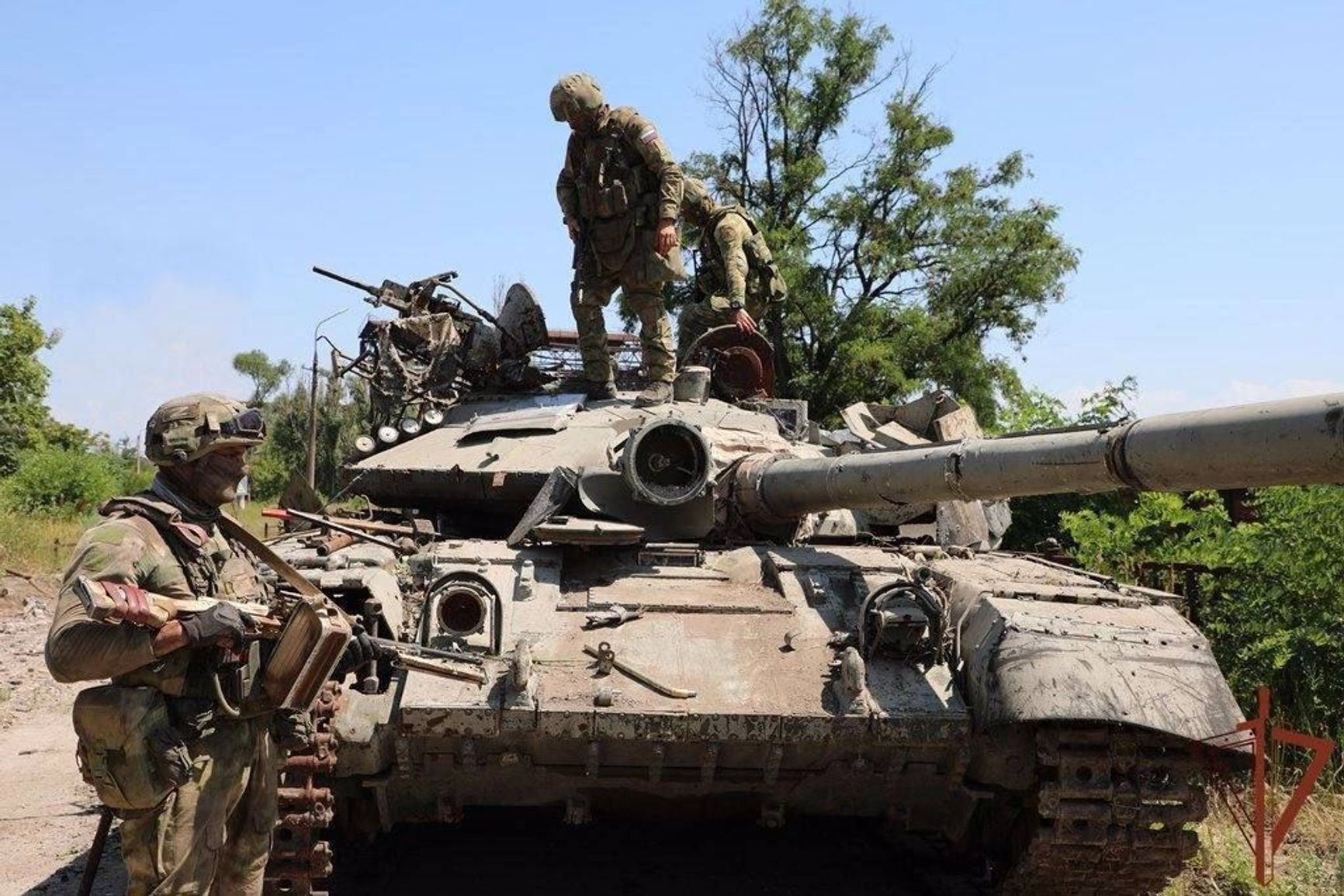
Additionally, a video has surfaced showing four M2A2 Bradley ODS-SA BMPs and a T-64BV tank being hit simultaneously.
Russian sources are circulating a video of what is claimed to be the destruction of a third Slovenian M-55S tank in the Svatove-Kreminna section.
In the Kherson Region, Lancet kamikaze drones destroyed a radar station and a vehicle from the Skyguard Aspide (Spada) surface-to-air missile system near Muzykivka on the right bank of the Dnipro River. The target was initially mistakenly identified as a radar station of the NASAMS complex.
A captivating video circulating on Russian pro-war channels depicted a Lancet drone allegedly striking a Leopard 2A6 tank “directly in the ammunition bay.” However, Andriy Tarasenko, from the Telegram channel “Tanks. History and Modernity. Btvt.info,” believes the drone hit the smoke grenade launchers and possibly the power electronics unit instead. He notes that the tank will require significant repairs.
Meanwhile, in the Donetsk Region, Ukrainian forces destroyed another Russian 2S7 Pion self-propelled gun, likely with a single HIMARS MLRS rocket strike. Additionally, in the Donetsk Region’s Marinka, a Russian (possibly abandoned) BMP-3 infantry fighting vehicle (IFV) was hit by a Ukrainian FPV drone, leading to the detonation of the vehicle’s ammunition.
A Twitter user with the handle @naalsio26 updated figures relating to photo- and video-confirmed losses of both Russia and Ukraine during the AFU counteroffensive in the Zaporizhzhia direction. According to the user’s calculations, from June 4 to July 21, the Ukrainian forces lost 210 units of equipment and weapons in this operational area, while the Russian forces lost 225 units. In the past week, the user documented the loss of only 15 units of equipment with the AFU, while the Russian Armed Forces suffered the loss of at least 42 units.
This indicates that during the Ukrainian counteroffensive, the losses of the defending side have surpassed those of the attacking side. Typically, in offensive operations, the losses of the defending side are expected to be three times lower.
Arms supplies
M2A2 Bradley ODS-SA infantry fighting vehicles equipped with BRAT (Bradley Reactive Armor Tiles) explosive reactive armor kits, which reduce damage from hits from anti-tank guided missiles (ATGMs) and grenade launchers, have been confirmed as deployed with the AFU. As noted by the Telegram channel Voenny Osvedomitel, «despite similar kits developed long ago, Russian BMPs are still not equipped with a mass-produced version of the reactive armor.»
Bulgaria's parliament has voted in favor of sending about 100 old armored personnel carriers (APCs) to Ukraine along with armament and spare parts. According to the Sofia Globe, representatives of the Bulgarian Interior Ministry and army claimed that the country “does not need” the equipment.
Several dozen Wolfram vehicles — mobile missile systems based on Supacat 6x6 vehicles and equipped with Brimstone guided missiles — have been reportedly delivered to Ukraine.
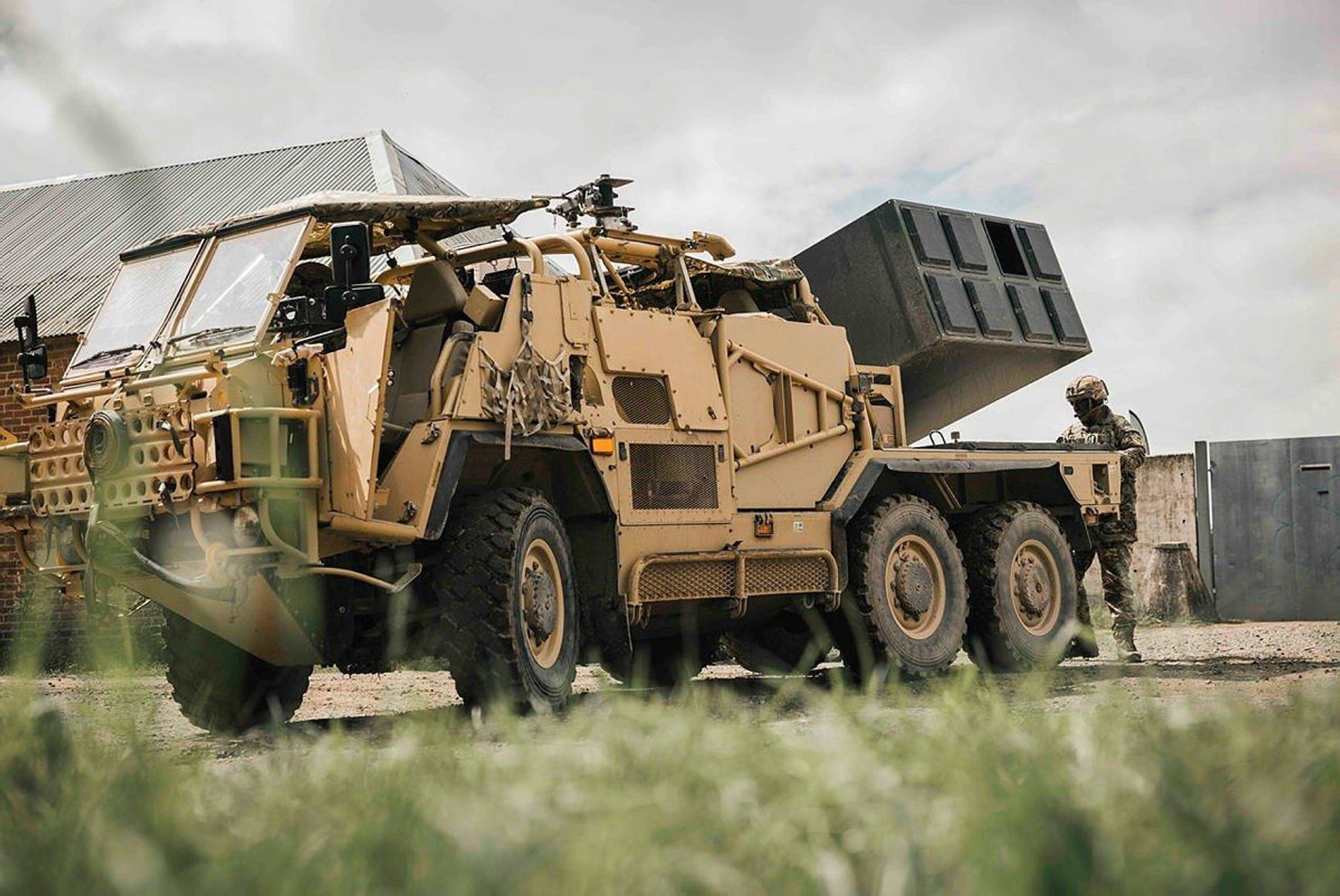
Additionally, Poland's repair center in Gliwice has commenced operations with the arrival of the first two Leopard tanks. Defense Minister Mariusz Blaszczak announced the development on Twitter. Poland had previously signed an agreement with Germany for the creation of a tank repair hub. Further reports confirmed that Leopard 2A5 and Leopard 2A6 tanks provided to Ukraine will also undergo repairs, potentially in Germany and Lithuania. In April, the Polish Bumar-Łabędy factory initiated the repair of T-64 tanks as part of an agreement between Polska Grupa Zbrojeniowa and the Ukrainian Ukrobronprom.
The first deployment of the Switchblade 600 kamikaze drone, supplied by the US, has been confirmed. The Russian Vostok battalion released a video showing the drone that had been downed near the village of Novodonetske.
The Switchblade 600 drone is equipped with an autonomous munition, similar to the warhead of a Javelin anti-tank missile. It can hover over a designated area to detect and attack targets.
Photos of US-made M864 base bleed cluster artillery shells with an extended range of 29 km, which are now in use by the AFU, have been made public.
The Fighterbomber Telegram channel, affiliated with the Russian Aerospace Forces, has released the first images of the upgraded Ka-52M helicopter. This channel is engaged in fundraising and provides Russian pilots with flight suits, shoes, radios, navigation devices, first aid kits, and other equipment. In the footage, Russian pilots showcase some of the gear they have received with the new version of the Ka-52 in the background. The freshly painted appearance of the helicopter suggests that it was recently delivered. According to the Russian think tank Center for Analysis of Strategies and Technologies, there is a high possibility that this modified helicopter is already taking part in the conflict in Ukraine.